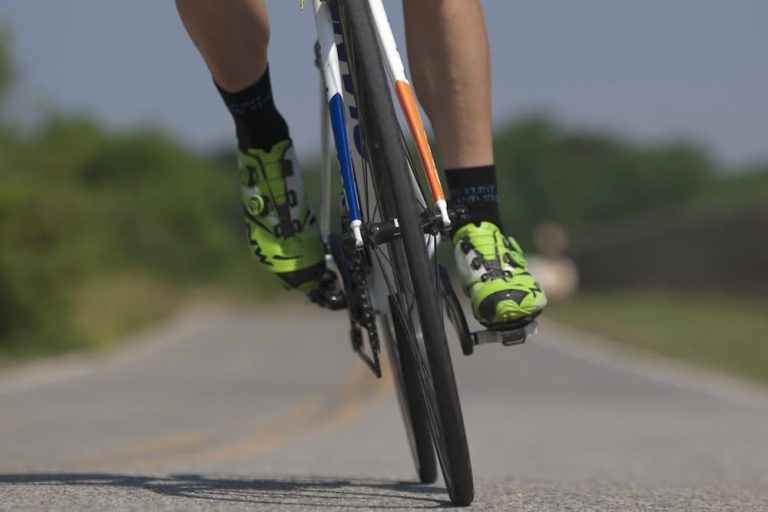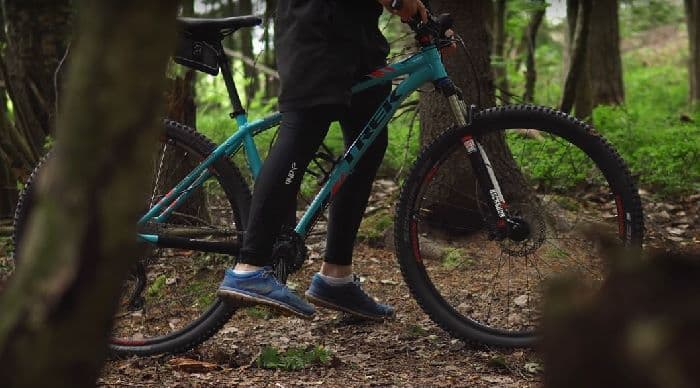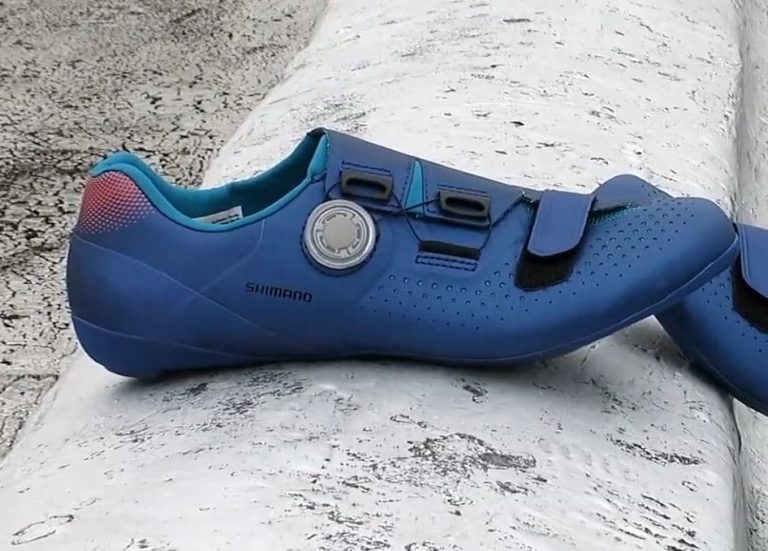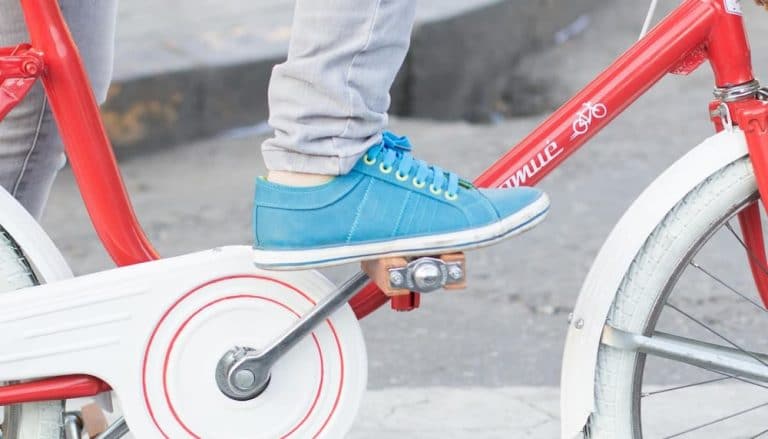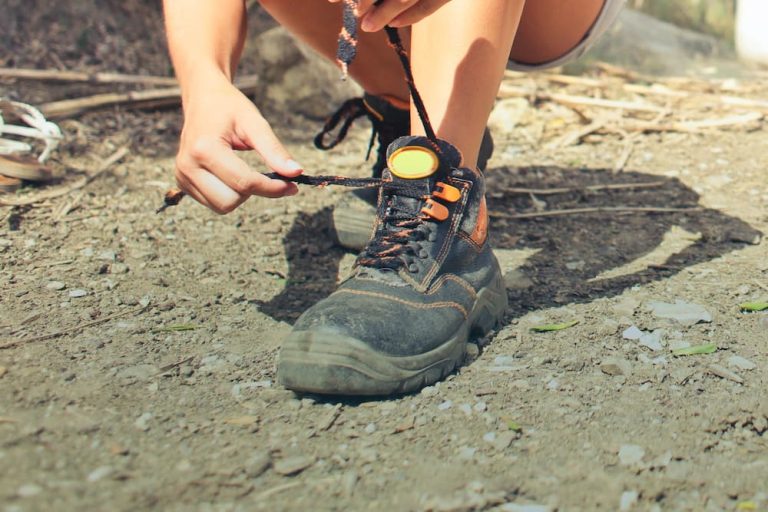How to Clean Cycling Shoes?
I know the frustration of dirty cycling shoes all too well. Dirty shoes are not just an eyesore – they can also harbor bacteria and odors, diminishing their comfort and lifespan. I’ve faced this issue countless times, especially after long rides in hot weather or encounters with mud and grime.
It’s not just about the dirt. The challenge is more profound. Think about the last time you tried cleaning your cycling shoes. Were you worried about damaging the material? Did you spend hours scrubbing, only to find those stubborn marks still there? Or maybe you avoided cleaning them altogether, worried you might do more harm than good.
Here’s the good news. You don’t have to live with dirty, smelly cycling shoes. My experience has led me to explore various effective, safe methods for cleaning cycling shoes. Whether coated in road grime, stained from trail rides, or need a refresh, this guide provides step-by-step instructions and expert tips to restore your shoes to their former glory.
As an Amazon Associate, I earn from qualifying purchases made through links in this post at no extra cost to you.
Contents
- How to Deep Clean Cycling Shoes: A Step-by-Step Guide
- Step 1: Cleaning the Outer Surface of Cycling Shoes
- Step 2: Thoroughly Washing the Insoles
- Step 3: Detailed Guide to Washing the Shoes
- Step 4: Properly Air Drying Your Cycling Shoes
- Step 5: Applying Shoe Powder for Faster Drying
- Step 6: Disinfecting with a Cleaning Spray
- Step 7: Reinserting the Soles After Cleaning
- Specialized Tips for Cleaning White Cycling Shoes
- Maintaining the Cleanliness of White Cycling Shoes
- Guidelines for Machine Washing Cycling Shoes
- Effective Methods for Eliminating Odors in Cycling Shoes
- Frequently Asked Questions
- Conclusion
How to Deep Clean Cycling Shoes: A Step-by-Step Guide
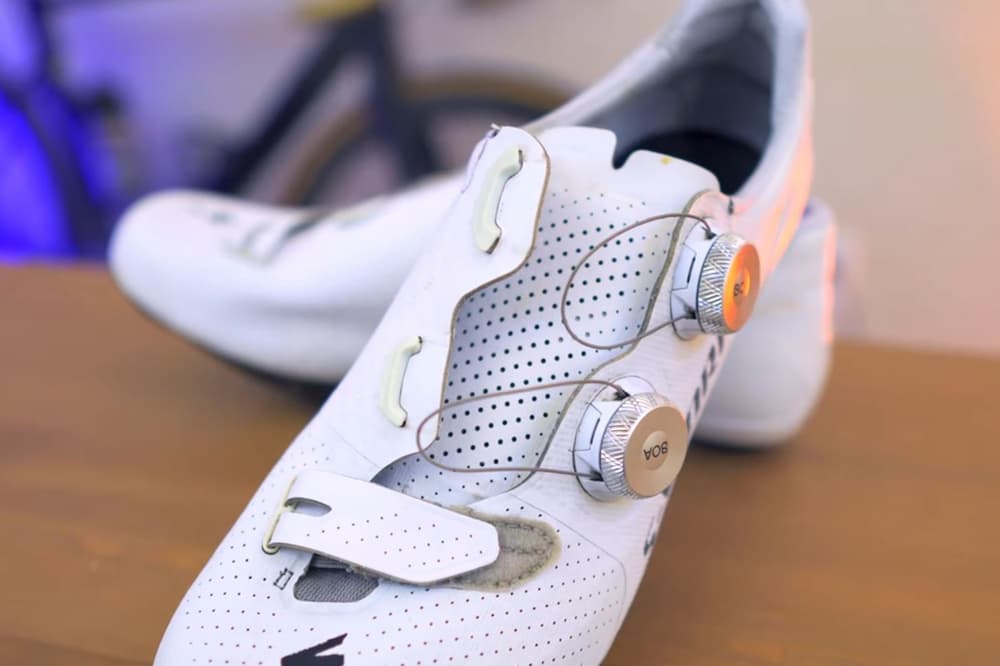
Here’s a detailed breakdown of how you can clean cycling shoes properly. This process will help you deep clean the shoes you wear when you are riding your bicycle, which takes time and effort. Let’s take a look at the process.
Step 1: Cleaning the Outer Surface of Cycling Shoes
To start, you must wipe the shoes with a damp cloth. Pick a soft cloth, as rough fabric may damage the texture of the shoe. This step may get the job done if there isn’t enough dirt on the shoes. However, it won’t clean the shoes inside out.
Still, if the shoes don’t smell or don’t look dirty inside, you don’t have to follow the entire process, as it can get quite intense.
Related reading: How to Know if Your Cycling Shoes Are Too Small or Too Big?
Step 2: Thoroughly Washing the Insoles
The shoes’ insoles become dirtier over time as they accumulate the most dirt and sweat. These absorb most of the sweat on your feet and quickly get smelly.
So, you must carefully wash them to ensure they’re clean of sweat and dirt. To do so, submerge the insoles in warm water. To make the process more effective, you can add a bit of soap or detergent to them. Also, keep the shoes submerged for a few minutes and then wash them with a gentle massage.
To finish the process, run them under water to rinse the soap. Clean all the soap properly, as residual soap can damage the insoles over time.
Step 3: Detailed Guide to Washing the Shoes
After washing the insoles, get to cleaning the shoes. We don’t recommend washing the shoes with the insoles in them. Why? Because the insoles can trap some of the dirt inside the shoes.
You can wash the shoes using the same method as the previously described. Submerge them in warm and soapy water. Keep them there for some time to ensure they’re appropriately wet and soapy.
Then, brush them with a soft toothbrush to remove dirt and grime. You may also apply some pressure while cleaning the sole.
However, don’t apply too much pressure while cleaning the shoe body, as it may degrade the color or texture. While cleaning the body, you can also use a gentle cloth instead of a toothbrush.
Step 4: Properly Air Drying Your Cycling Shoes
One of the worst mistakes you can make after washing the shoes is to leave them as is. Most germs and bacteria thrive in moist areas. So, leaving the shoes without drying them will trigger further bacterial infestation.
This is why we highly recommend air drying the shoes and the insoles after washing them. You can leave them in direct sunlight if you don’t have an air dryer.
Step 5: Applying Shoe Powder for Faster Drying
Shoe powder can help dry the shoes faster, so we recommend using them. However, this isn’t an absolute necessity. But we still recommend doing so as it can dry the shoes faster and ensure zero remaining moisture.
A lot of people use talc instead of shoe powder. While talc is excellent for moisture absorption, putting it into shoes can lead to different health issues. So, it would be best if you went for a talc-free powder.
Step 6: Disinfecting with a Cleaning Spray
There may be some bacteria or germs left even after a thorough wash. Even the slightest trace can lead to a full-scale breakout later. That is the importance of disinfecting them.
You’ll find many cleaning sprays on the market for this purpose. However, not every one of them will work properly.
And if you don’t want to waste your money on an ineffective product, you should get the Combat Cleaner deodorizer. This product comes in three different variations, and it packs a powerful formula capable of ridding your shoes of all bacteria and germs.
Step 7: Reinserting the Soles After Cleaning
Once you complete the cleaning and drying, it’s finally time to reassemble the shoe. Put the insoles back in and ensure there aren’t any wrinkles, as these may get permanent and lead to discomfort.
Specialized Tips for Cleaning White Cycling Shoes
There’s usually no difference in the cleaning process between regular and white shoes. However, a few extra steps help, and we’ll describe those steps here.
Toothpaste
If you want to whiten your white cycling shoes with something readily available, use toothpaste. Most kinds of toothpaste come with a whitening technology that helps whiten your teeth. Believe it or not, this can work equally well on your shoes.
So, after drying the white shoes, you can go for a second cycle where you brush the shoes with toothpaste instead of detergent. Add a little water so the shoes don’t get completely wet.
Scrub the shoe carefully with a toothbrush in a circular pattern. After a few turns, wipe it clean with a damp towel. Thus, this should help return some of the shine to the shoes.
Magic Eraser
The Magic Eraser from Mr. Clean is a durable scrubber capable of cleaning thrice as much as a bleach scrub. It also offers a Durafoam technology that facilitates micro-scrubbing. So, it works charms on synthetic leather shoes. However, it’s not as good for microfiber shoes.
DIY Mix
You can use a mixture of detergent, vinegar, and water for microfiber shoes. This mixture can properly clean microfiber shoes and doesn’t affect the material.
You can use detergent of any brand for making this mix, but we highly recommend Earth Breeze.
Maintaining the Cleanliness of White Cycling Shoes
You can clean white cycling shoes using spray-on protectors and occasional deep cleaning. Here are some methods you must try!
Spray-On Protectors
Spray-on protectors are great for keeping your shoe dirt and grime-free. The spay-on protector will add a gel layer on top of your white shoe. So, the dirt sticks on the gel and not on the surface of the shoe.
This makes it much easier to clean the shoe off. Thus, we highly recommend using the Repel from Jason Markk. This shoe protector keeps your white shoes safe from stains and liquids. It’s odorless and colorless, so you can apply it to a white shoe without any challenge. Furthermore, you can use it on all materials, which makes it even more convenient.
Wipe After Every Use
If you have a white shoe, wiping it after every use would be best. This will prevent stains from getting permanent, ultimately keeping your shoes fresh.
Use a Stain Remover
Although we wouldn’t recommend using a stain remover on the shoe, consider applying them to the shoelaces. Even if the entire shoe is white, it’ll not look nice if the laces look stained. So, stain removers can restore the whiteness of your shoelaces and make the shoe look more attractive.
Guidelines for Machine Washing Cycling Shoes
Yes, you can clean your cycling shoes in a washing machine. Use a little detergent and cold water to keep the shoe in shape.
However, it would be best not to dry the shoes in the machine. Each machine dry is bound to damage the shoe to some extent. Hence, we recommend hand cleaning as it’s the safest option.
Effective Methods for Eliminating Odors in Cycling Shoes
Remember that you shouldn’t store them wet, which will further increase bacterial infestation and smell. Also, pull the soles out during the wash, and don’t put them back in before you dry them thoroughly.
While you rinse, you can use soap and a small amount of bleach. Also, if you can’t put it in the sun, you can dry it under UV light. UV light is what kills bacteria. However, the sun is the superior option as its infrareds help with drying and are more economical.
If the smell is too intense and can’t be removed with a simple rinse and dry process, leave the pair in a mixture of water and detergent for an hour before rinsing the soap off. This will get rid of all the dirt from the shoe.
Another excellent solution requiring less effort is packing the shoes with newspaper afterward. While this will not reduce the odor of shoes that smell already, it can prevent odor buildup. Also, you can use a mixture of water and vinegar if you don’t have a shoe deodorizer at your disposal.
An excellent alternative to this is using deodorizer balls. You can put one of these in the shoes after rides, and they’ll keep the shoes fresh. If you can’t get your hands on deodorizer balls, you can try tea bags instead! You can also try putting lemon peels in it.
Related reading: Cycling Shoe Guide – Differences Between Bike Shoes Explained
Frequently Asked Questions
Can I use household cleaners like bleach or vinegar to clean my cycling shoes?
Using harsh household cleaners like bleach can damage the material of cycling shoes, especially if they’re made of delicate fabrics like leather or synthetic mesh. Vinegar, on the other hand, can be used in a diluted form for odor control, but it’s not recommended for stain removal or deep cleaning as it might affect the color and texture of the shoes.
How often should I clean my cycling shoes to maintain them in good condition?
I recommend cleaning your cycling shoes at least once a month if you’re a regular rider. However, if you often ride in muddy or wet conditions, consider cleaning them more frequently. Regular cleaning keeps your shoes looking good and prevents bacteria buildup and prolongs their lifespan.
Is it safe to dry cycling shoes in direct sunlight after washing them?
While air drying is the best method, direct sunlight can be harmful, especially for shoes with colored fabric or sensitive materials. Excessive sun exposure can cause the colors to fade and materials to weaken or warp. Instead, dry your shoes in a well-ventilated area away from direct sunlight.
Conclusion
After going through this detailed guide on cleaning cycling shoes, I’ve realized that keeping our trusty companions in top shape is not as daunting as it might seem.
We’ve explored everything from gentle cleaning techniques for regular maintenance to tackling those challenging stains and odors. The satisfaction of transforming a pair of well-worn cycling shoes back to their near-original state is unmatched.
The deep cleaning steps ensure that even the most persistent dirt and grime can be effectively removed. I’ve found that the specialized tips for white shoes are particularly useful, as they require extra care to maintain their crisp appearance. As we’ve discussed, regular upkeep keeps the shoes looking good and extends their life, making our investment in quality gear all the more worthwhile.
Moreover, the insights on machine washing offer a convenient alternative for those times when manual cleaning seems too laborious. However, the odor elimination techniques have been a game changer for me. There’s nothing more off-putting than smelly shoes. Now, we have practical ways to address this common issue.
In essence, cleaning cycling shoes effectively requires the right approach, a bit of patience, and the knowledge we’ve shared here. With these methods, our cycling shoes can remain a source of pride and performance, ready to accompany us on many more rides.
Related reading: Best Regular Non Cycling Shoes For Cycling Review & Buying Guide

